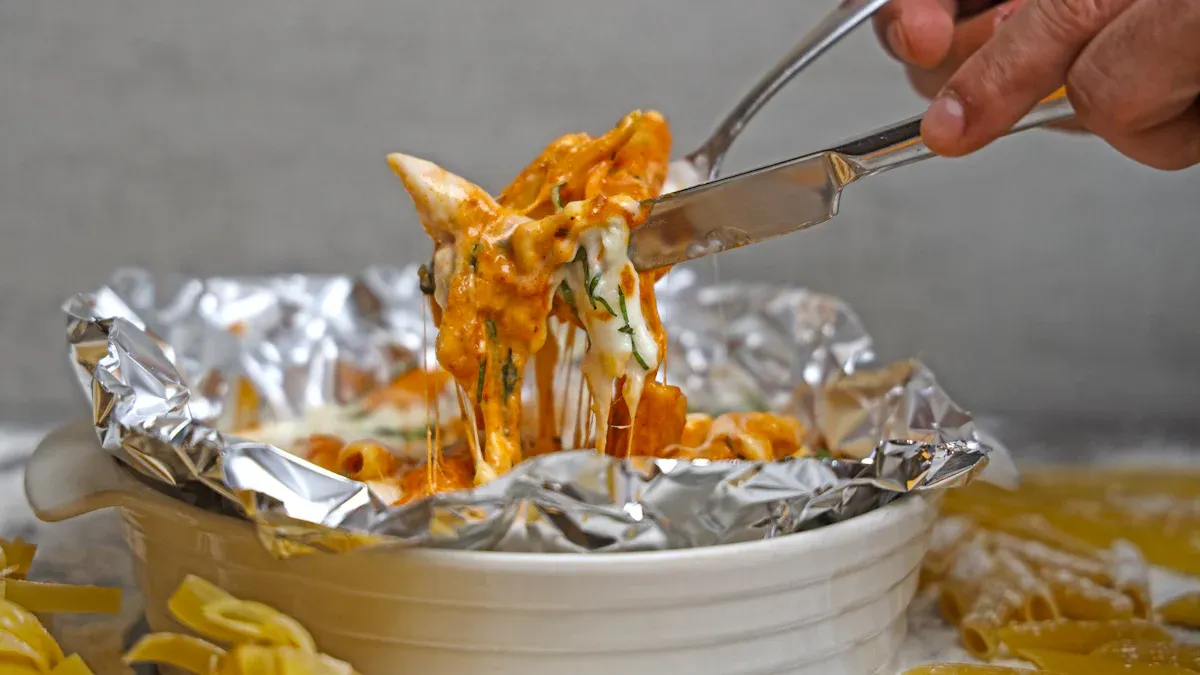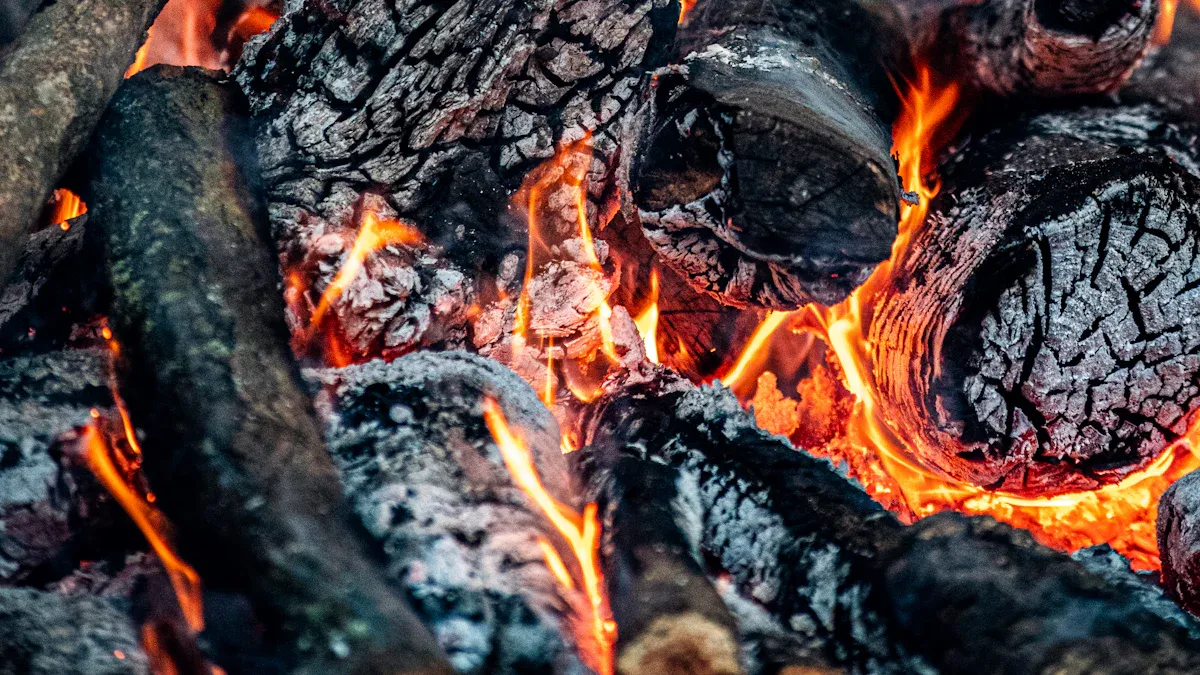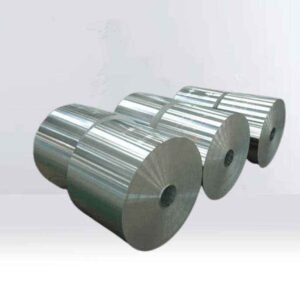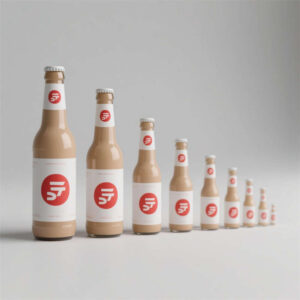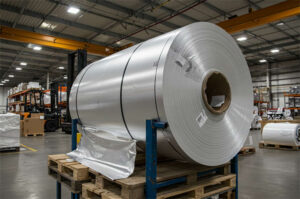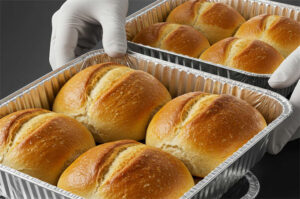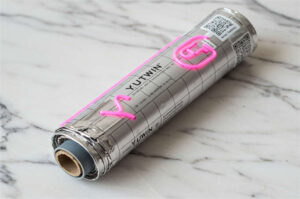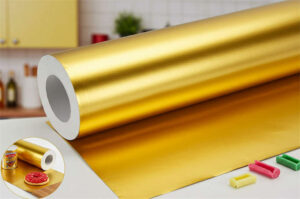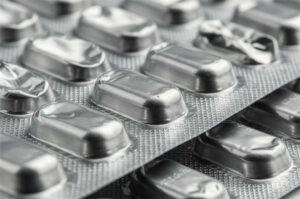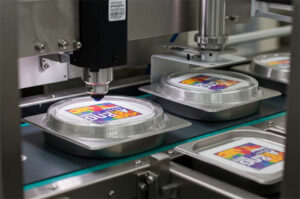You might wonder if non stick aluminum foil is a smart choice for your kitchen. Many people use it every day for baking, grilling, or storing leftovers. Studies show that small amounts of aluminum can move into your food, especially with high heat or acidic dishes, but your body gets rid of most of it quickly. Health groups like the WHO and FDA say normal use is safe for healthy people. Some folks worry about links to diseases or think the foil is highly toxic, but science does not prove these fears. Think about how you cook and what matters most to you before choosing non stick aluminum foil.
Principais conclusões
- Non stick aluminum foil helps food cook the same all over. It keeps food moist. It also makes cleaning up fast and easy. Use non stick foil at temperatures under 500°F. Do not use it with acidic or salty foods. This helps stop aluminum from getting into your food. Always use foil that is new and not damaged. Do not put foil on direct flames or in microwaves. This keeps cooking safe. Recycle clean non stick foil to save energy. This also helps the environment. Check your local rules before recycling. Try parchment paper or silicone mats for acidic foods. Use them for cooking at higher heat too.
Benefits
Non Stick Aluminum Foil Advantages
When you use non stick aluminum foil, you get a lot of helpful features that make cooking easier. The special coating on this foil keeps food from sticking, so you do not have to scrape off burnt bits. Most coatings use silicone or PTFE, which create a smooth surface. This means your food slides right off, even after baking or grilling.
Here’s a quick look at how the non-stick coating works:
| Aspecto | Explanation |
|---|---|
| Non-stick coating material | Usually made from silicone or PTFE, both known for anti-adhesive properties. |
| Mecanismo | Makes the surface smooth and slippery, so food does not stick. |
| Reduced need for grease | You can skip extra oil or spray, which helps you cook healthier meals. |
| Thermal conductivity | The coating does not block heat, so your food cooks evenly. |
| Prevention of burning | Less direct contact with foil means less chance of burning. |
| Durabilidade | The coating can wear out over time, especially if scratched or overheated. |
| Practical benefits | Food comes off easily, cleanup is simple, and you spend less time scrubbing pans. |
You can see that non stick aluminum foil offers more than just a slippery surface. It helps you cook with less oil, keeps food from burning, and makes cleanup a breeze.
Cooking Performance
You want your food to cook evenly and stay juicy. Non stick aluminum foil does a great job here. It holds up well under high heat, so you can use it for roasting, grilling, or baking. Most non-stick coatings stay safe up to 500°F (260°C). If you keep the heat below this level, you do not have to worry about the coating breaking down or releasing bad fumes.
Tip: Always check the box for the recommended temperature limit. Try not to preheat empty foil-lined pans or use the foil at very high heat for a long time.
Non stick aluminum foil also helps your food cook evenly. The foil spreads heat across the surface, so you do not get hot spots that burn your food. When you wrap food in foil, it creates a sealed space. This keeps moisture inside, so your chicken or fish stays tender and does not dry out. The foil also acts as a barrier, keeping air and light away from your food, which helps it stay fresh.
- Foil keeps food moist by sealing in juices.
- It works well for high-heat cooking and does not tear easily.
- You get even cooking and better texture.
Convenience
If you like easy cleanup, you will love non stick aluminum foil. Food does not stick, so you can lift it right off the foil. You do not need to scrub pans or soak them overnight. You also use less oil, which means less greasy mess.
Here are some ways non stick aluminum foil makes your life easier:
- You can line baking trays or pans for quick cleanup.
- You do not need to add extra oil or butter.
- The foil is strong and flexible, so it does not rip when you wrap food.
- You can use it for grilling, roasting, or storing leftovers.
Non stick aluminum foil saves you time and effort in the kitchen. You spend less time cleaning and more time enjoying your meal.
Risks
Health Concerns
You might wonder if using non stick aluminum foil pode affect your health. Most people use it safely, but there are some things you should know. When you cook with aluminum foil, especially at high heat, a small amount of aluminum can move into your food. This happens more with acidic foods like tomatoes or citrus, or when you use a lot of salt and spices. Studies show that cooking meat in aluminum foil can raise the aluminum content in your food by up to 378%. That sounds like a lot, but health experts say your body gets rid of most of this aluminum quickly.
Still, you should be careful. Cooking at very high temperatures, or leaving food wrapped in foil for a long time, can increase how much aluminum gets into your meal. Some scientists worry that too much aluminum might link to health problems like Alzheimer’s or Parkinson’s disease, but there is no clear proof yet. To stay safe, try not to use non stick aluminum foil with very acidic or salty foods, and avoid cooking at super high heat for long periods.
Observação: If you see the foil looking worn or scratched, it might release more aluminum. Try to use fresh foil and avoid using it with foods that can react with metal.
Impacto ambiental
You may not think about what happens to foil after you throw it away, but it matters. Making aluminum foil uses a lot of energy and can harm the environment, especially where companies mine for bauxite, the main ingredient. This mining can hurt rainforests and cause health problems for people living nearby.
When you toss non stick aluminum foil in the trash, it can end up in a landfill. If you recycle it, you help save energy and cut down on pollution. Recycling aluminum uses only about 5% of the energy needed to make new foil. That means less pollution and fewer greenhouse gases. Non stick foil is sometimes easier to clean and recycle because food does not stick to it as much. Some coatings, though, can make recycling harder if they contain certain chemicals.
Here’s a quick look at the environmental side:
| Factor | Regular Foil | Non Stick Foil |
|---|---|---|
| Recyclable? | Yes, if clean | Yes, if clean |
| Reusability | Tears easily | More durable |
| Coating chemicals | None | May complicate recycling |
| Landfill waste | Higher (single-use) | Lower (can reuse) |
♻️ Tip: Always clean your foil before recycling. If it has too much food or grease, it might not get recycled.
Usage Limitations
You cannot use non stick aluminum foil for every recipe. Some foods and cooking methods do not mix well with it. Experts say you should avoid using it with foods that are high in acid or salt, like tomato sauce, citrus fruits, or vinegar. These foods can react with the foil and cause more aluminum to get into your meal. You might also notice a strange taste.
You should also avoid using foil in the microwave. It can spark and damage your appliance. If you need to cook something acidic or salty, try using a different material, like parchment paper or a glass dish.
Alert: Always check the box for temperature limits. Most non stick aluminum foil is safe up to 500°F (260°C). Do not use it above this temperature, or the coating might break down and release fumes.
Safe Use Tips
Best Practices
You want to get the most out of non stick aluminum foil while keeping your meals safe. Start by following the temperature guidelines on the box. Most brands recommend using foil at or below 200°C (about 400°F) for up to an hour. If you need to cook something quickly at a higher temperature, keep it under 250°C (482°F) and avoid direct flames. Here’s a quick table to help you remember:
| Aspecto | Safe Practice |
|---|---|
| Maximum Oven Temperature | ≤ 200°C (400°F) for up to 1 hour |
| Short-term High Heat | Up to 250°C (482°F) for short periods |
| Avoid | Open flames, temps > 300°C (572°F), microwaves |
| Acidic/Salty Foods | Use parchment paper as a barrier |
When you handle foil, always use a fresh sheet for each meal. Wrinkles and tears can trap food and germs. Crimp the edges tightly if you make foil packets, and press the foil smooth when lining pans. Never let foil touch open flames or the heating element in your oven. If you want to store leftovers, foil works well for short periods, but switch to glass or stainless steel containers for longer storage.
Tip: Clean foil can be recycled! Roll it into a ball at least 2 inches wide and check your local recycling rules.
When to Avoid
Sometimes, non stick aluminum foil is not the best choice. Skip it when cooking or storing acidic foods like tomatoes, citrus, or vinegar-based dishes. These foods can react with the foil, causing more aluminum to get into your meal. Salty foods and lots of spices can do the same thing, especially at high heat. If you plan to cook above 400°F or for a long time, pick another option.
You have safer and greener choices for many kitchen tasks. Try parchment paper for baking or steaming, silicone baking mats for roasting, or glass and ceramic dishes for casseroles. Stainless steel pans and reusable silicone lids also work well and help cut down on waste.
Observação: People with kidney problems should avoid using aluminum foil for cooking or storage.
Alternatives
Parchment Paper
If you want a non-stick surface, try parchment paper. It works well for baking and roasting. Parchment paper can handle heat up to 420–450°F. It has a silicone coating that stops food from sticking. Cookies and pastries come off easily. You do not need to use oil or spray. This helps you make healthier food.
Here is a quick chart to help you choose:
| Feature | Parchment Paper | Folha de alumínio antiaderente |
|---|---|---|
| Resistência ao calor | Up to 450°F | Up to 500°F or higher |
| Non-Stick Performance | Excellent | Good, but coating can wear |
| Grease Containment | Moderate | Excellent |
| Reactivity | Safe with acidic foods | Can react with acids |
Parchment paper is better for the environment. It breaks down on its own, so it does not fill up landfills. Many brands now make compostable or PFAS-free parchment. These kinds do not have harmful chemicals. You can use parchment paper more than once. Cleanup is simple, so you save water and soap.
Tip: If you bake a lot, parchment paper keeps pans clean. It also helps the planet by making less waste.
Other Options
You have many choices besides parchment paper and foil. Professional cooks use different tools to make cooking easier and greener:
- Silicone baking mats: These mats are strong and you can use them many times. They work from -40°F to 500°F. You do not need oil, and they last a long time.
- Glass bakeware: Glass pans do not react with food. They are easy to clean and you can use them again.
- Cast iron cookware: Cast iron pans are good for roasting and baking. They are tough and last for years.
- Stainless steel sheets: These pans do not rust. They work for grilling or roasting and food does not stick.
- Beeswax wraps: You can use these wraps to store food. They break down in nature and you can use them again.
- Greased pans or cooking sprays: A little butter or oil can stop food from sticking if you do not have non-stick tools.
🧑🍳 Try using different tools to match your cooking needs. You can save money, make less trash, and clean up faster with reusable items.
You can use non stick aluminum foil for most meals. It is safe if you follow some easy rules. Experts say it works well for daily cooking. But do not use it with acidic foods. Also, do not use it at very high heat. Here is a simple chart:
| Benefit | Risk |
|---|---|
| Easy cleanup | Not for acidic foods |
| Even cooking | Can’t use in microwave |
| Saves time | Must recycle properly |
Think about how you cook before picking non stick aluminum foil. Choose what is best for you and your kitchen.
Perguntas frequentes
Can you put non stick aluminum foil in the oven?
Yes, you can use non stick aluminum foil in the oven. Just make sure you do not go over the temperature limit on the box. Most brands are safe up to 500°F.
Is non stick aluminum foil safe for grilling?
You can use non stick aluminum foil on the grill. It helps keep food from sticking and makes cleanup easy. Do not let the foil touch open flames, and always follow the temperature guidelines.
Can you recycle non stick aluminum foil?
You can recycle non stick aluminum foil if it is clean and free of food. Some recycling centers do not accept foil with non-stick coatings. Check your local rules before you toss it in the bin.
Does non stick aluminum foil change the taste of food?
Non stick aluminum foil does not change the taste of most foods. If you use it with acidic foods, you might notice a slight metallic taste. For those foods, try parchment paper instead.
What should you avoid when using non stick aluminum foil?
Avoid using non stick aluminum foil with acidic foods, in the microwave, or at very high heat.
Always check the box for safety tips and temperature limits.



